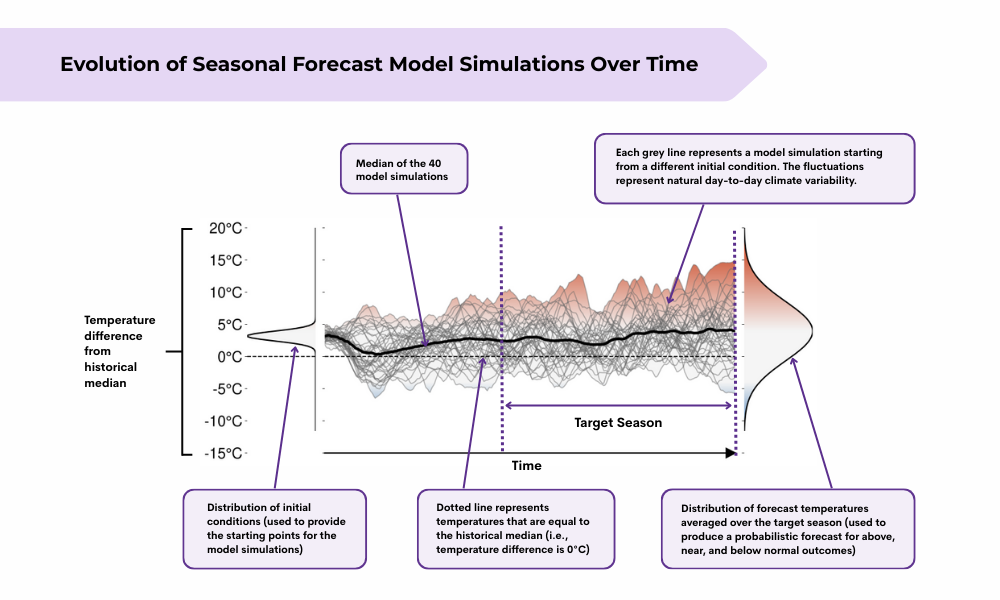Limitations of the seasonal prediction system
Seasonal forecasts on ClimateData.ca are produced using the Canadian Seasonal to Interannual Prediction System version 3 (CanSIPSv3). CanSIPSv3 combines forecasts from a weather and a climate model. These weather and climate models are numerical representations of the major processes that govern the state of the atmosphere, land, ocean and sea ice. While these models simulate the most important physical processes that determine weather and climate, they approximate or omit some physical processes that can affect weather and climate. As such, these models provide a very good, but not perfect representation of the weather and climate system.
The strengths and limitations of CanSIPSv3 are assessed by evaluating its performance over the period from 1991 to 2020. One type of performance metric is the skill of the prediction system.
Skill indicates how much trust can be placed in the seasonal prediction system, based on its past performance3. Skill is calculated by comparing forecasts produced using historical initial conditions, also known as hindcasts, with relevant observations.
Generally, the CanSIPSv3 skill depends on:
- Type of variable: CanSIPSv3 is usually more skillful for mean temperature than for total precipitation, for example.
- Location and season: CanSIPSv3 skill varies by location and season, with some areas and times of year showing greater skill than others. For example, skill may be higher in spring in regions closer to the Pacific Coast of Canada compared to Northern parts of Canada.
- Lead time: CanSIPSv3 tends to be more skilled when predicting conditions closer to the start date of the forecast (e.g., forecasting a month ahead is usually more accurate than forecasting several months ahead). It is recommended to recheck forecasts monthly, as the forecasting skill generally improves as the season of interest approaches.
All seasonal forecasts on ClimateData.ca include information about skill, which should be considered when using the forecasts.
Jump back to top









